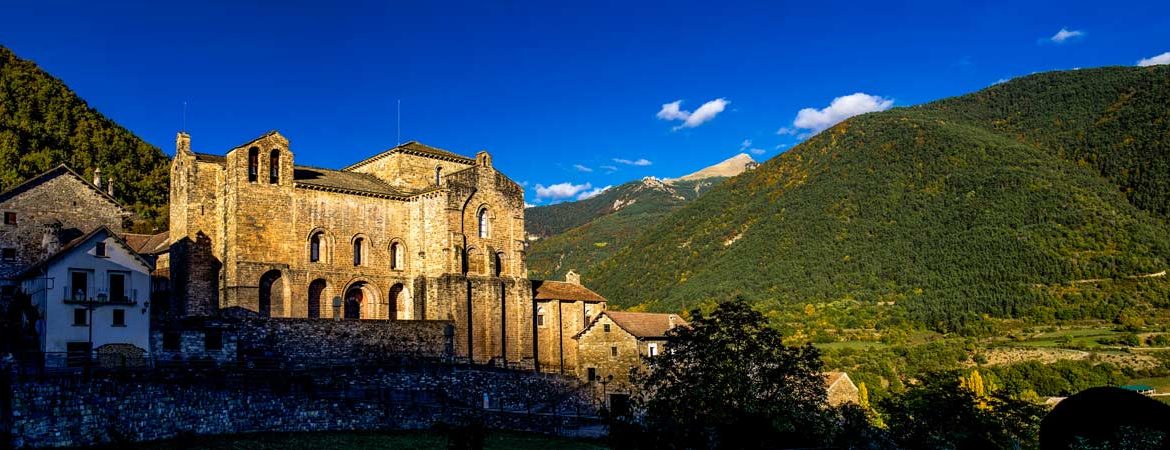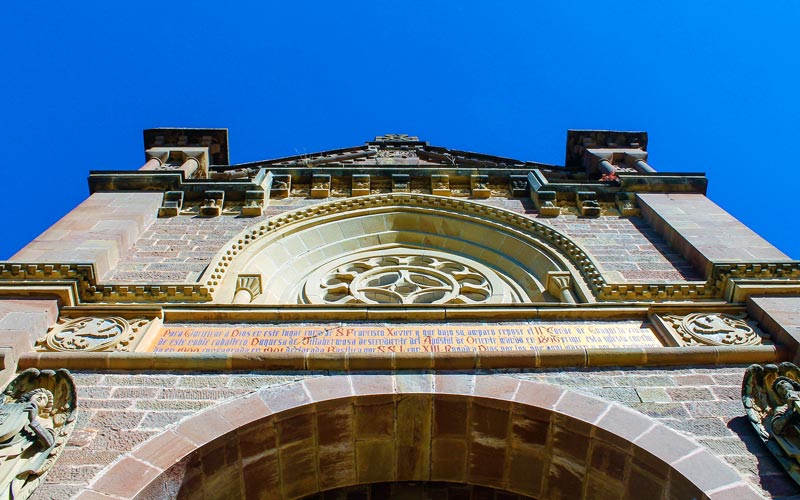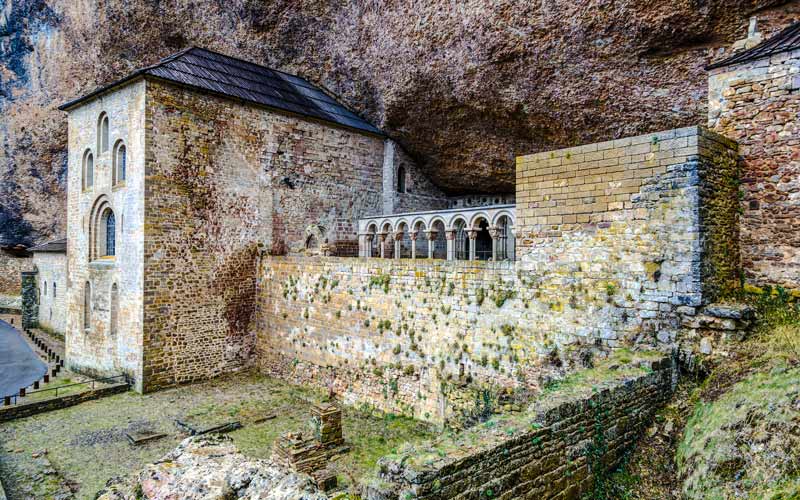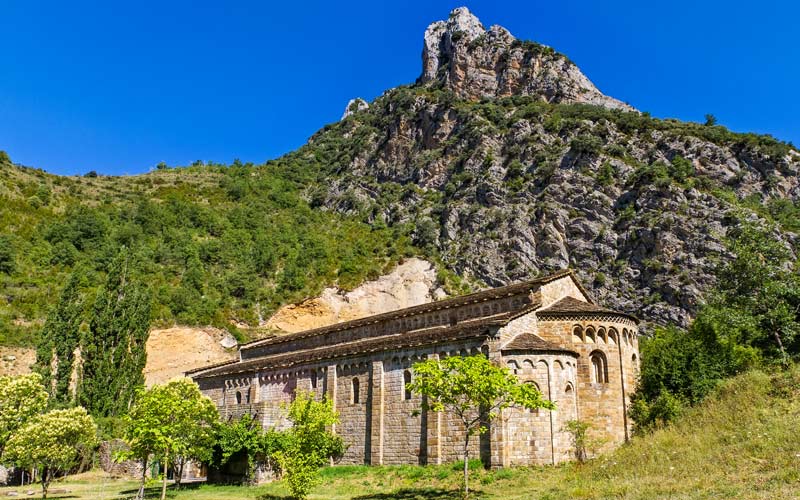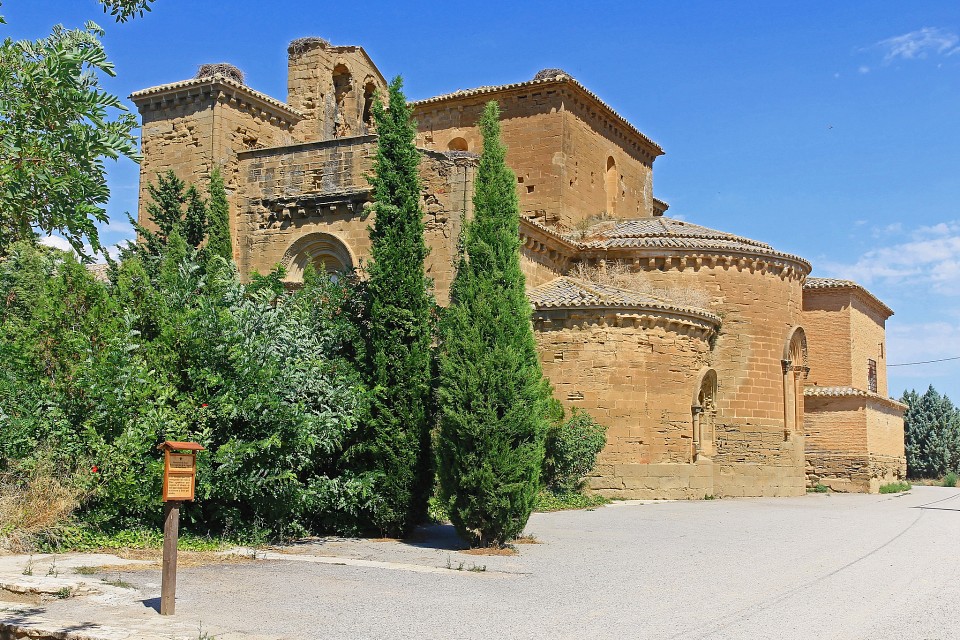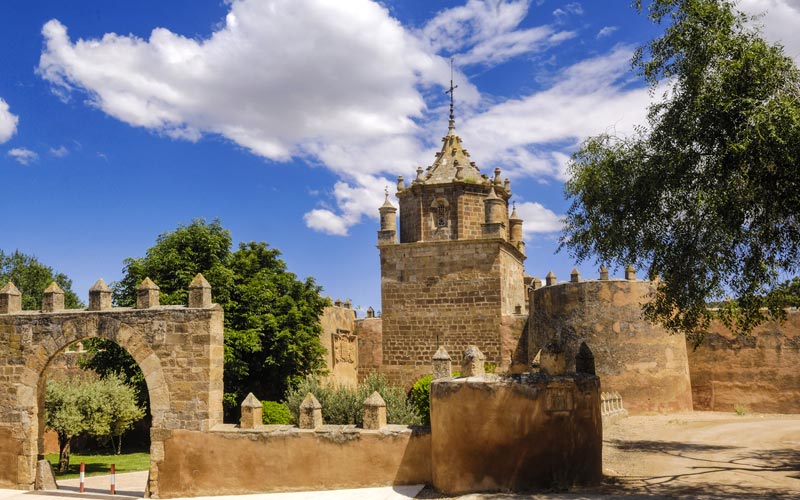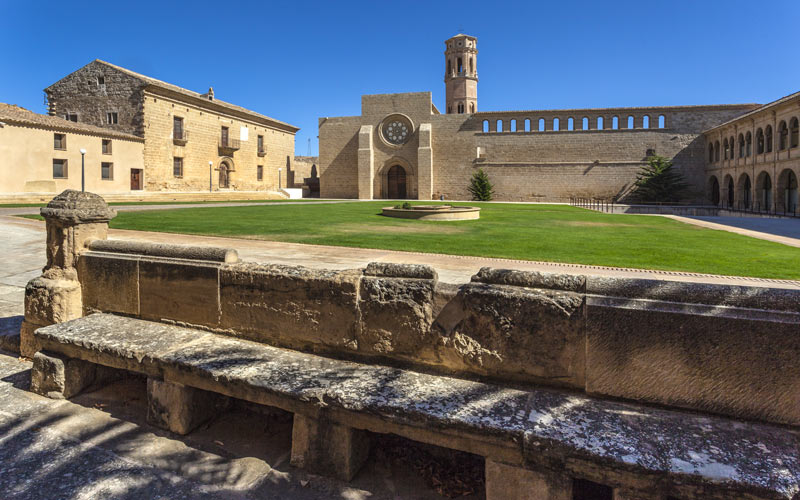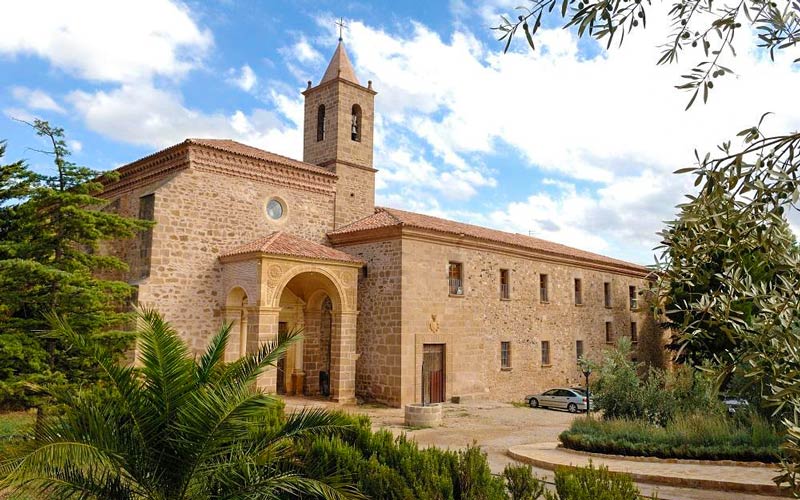Of all the beautiful and historical Aragonese attractions, we have decided to compile a list of the most important monasteries in Aragón. Aragón houses an extensive network of monasteries established in the long-gone ages of the Visigothic domination and set in stone in the first years of the Reconquista, in which these buildings played a big part in the development of many of the more primitive regions of Aragón, and they established the social and economic aspects of life in these same regions. Born from the auspices of kings and other powerful people, these spiritual and political centers lived in splendor in their early years, but most fell into abandon during the 19th century. Fortunately, they were later restored during the 20th century.
The first of the Aragonese monasteries that we have selected is the monastery of San Pedro de Siresa, an imposing, Romanesque mass of stone located in the Valle de Hecho. This makes it most northern monastery in our list. Its possible Visigothic origin is supported by various documents from the year 833, in which the donation of these lands by count Galindo Garcés is documented. This monastery is linked to the Holy Grail, which is said to have lived within its walls before it was moved to Valencia. For all this and more, it is an attraction that you cannot miss if you find yourself near its valley.
Formed by two different centers, the monastery of San Juan de la Peña is one of the main tourist landmarks in the Huesca province, as well as in Aragón in general. A large part of its popularity comes from where it is located. As Miguel de Unamuno described it, it sits at “the mouth of a world of boulders, clad in a forest of legend.” Its original building was built in the 11th century, but during the 18th century, a fire forced the community to move up the hillside, beginning construction on what was then called the “New Monastery.” Above all, what stands out the most are the cloister of the old monastery and the royal pantheon, where various Aragonese monarchs were laid to rest.
Located in the heart of the Ribagorza, this monastery was founded in the 11th century by the Lombard Masters in a place where a community of monks had already settled in the 9th century. From its origin, this monastery has been known for its position in the center of an isolated, yet naturally beautiful area, making it one of the most powerful establishments of the region. Santa María de Obarra suffered years of abandonment and deterioration from the 19th century, until the 6th decade of the 20th century, when renovation efforts began. When you visit, you have to see the cloister and the Visigothic baptismal basin.
This cistern monastery is located in Villanueva de Sigena, in the Monegros, and it was erected at the orders of queen Sancha de Castilla in the 20th century and devoted to the religious order of San Juan de Jerusalem. During the Spanish Civil War, this monastery was sacked and looted, resulting in the loss of many of the paintings and other works of art that it contained. After this episode, the paintings in the chapter room were transferred to the Museo Nacional de Arte de Cataluña, where you can still see them today. The monastery was restored between the end of the 20th century and the beginning of the following one; and it was able to recover most of the damaged elements.
The Royal Monastery of Santa María de Veruela is one of the principal monasteries of Aragón as well as one of the biggest tourist attractions in the Zaragoza province. It dates back to the 12th century, when it was built in accordance to the canons of the Order of the Cistrecian to become one of the main monastic centers of Aragón. After its confiscation in 1835, the place was converted into a guesthouse to avoid abandon and deterioration. Thus, the Monasterio de Veruela became a refuge for famous people, among which are the Becquer brothers, who found within its walls a romantic source of inspiration for their various works. From an excerpt of Cartas Desde Mi Celda, Gustavo Adolfo Bequer described the church of the monastery as “bigger and more imposing than the most imposing of our cathedrals.”
This is undoubtedly one of the places in Aragón with the steadiest flow of tourists. It was built during the end of the 12th century and in the beginning of the next century, and it is located in Nuévalos, near Calatayud, and it was occupied by monks from Poblet. Today, the monastery lives in a remarkable state of ruin, although it is interesting to visit the cloister, the church, and the chapter house. However, what makes this monastery worth visiting the most is the Parque Natural del Monasterio de Piedra, a beautiful place housing waterfalls and rock formations created by the Piedra River passing through the area. This monastery is also home to important historical events. In 1534, the first chocolate was made here, and in 1867, the first Spanish fish farm, which is still active today, was started here.
The history of this monastery begins with the donation of the Villa of Escatrón to a community of monks at the order of the Aragonese king Alfonso II. This resulted in the construction of a new monastery in 1202. As often happens in such cases, the monastery enjoyed a period of splendor until it was abandoned in the 19th century as a consequence of the Mendizábal Confiscation. At the end of the 20th century, the building was subject to exhaustive renovations that has made it the envy of all the other monasteries. The monastery currently functions as a guesthouse.
The youngest of the monasteries of Aragón on this list was built between the 16th and 18th centuries on the site of an old Gothic church from the 13th century. Located in Estercuel, in the region of Andorra – Sierra de Arcos, it is one of the main buildings of its style in the whole province of Teruel. It is particularly notable for its conservation and the beauty of its ensemble, which is partly from its status as an active monastery and the restoration efforts from recent decades. It is currently used as a guesthouse.

